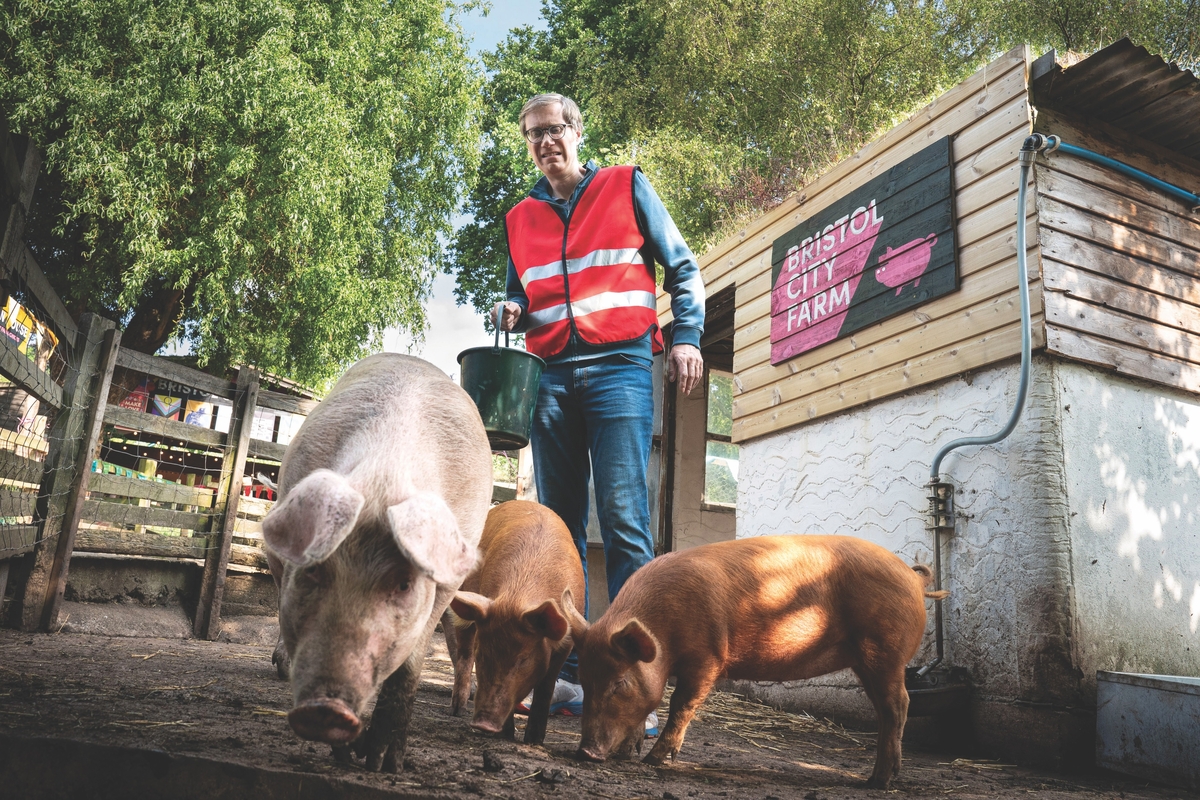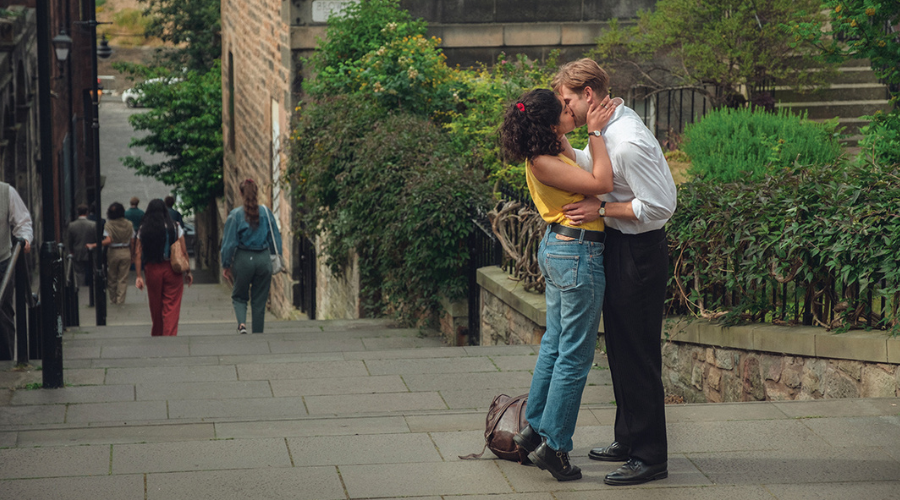From bustling streets to muddy farmyards and historic castles, TV tourism is now big business. Simon Bucks buys a ticket to some of Britain’s hottest locations
You’ve seen the show, now book the trip. Coming soon to screens worldwide is an advertising campaign for UK tourism, featuring some of the best-known TV and film locations on our sceptred isles.
“Starring GREAT Britain” will be launched in January by VisitBritain, whose job is to attract international visitors. It is spending several million pounds to cash in on a boom in “set-jetting” – marketing-speak for location tourism. It will focus on TV shows sold globally, featuring places recognised by international audiences.
“The challenge is that Britain can be seen as quite a traditional destination. So we are using film and TV as our hook to tell a broader story. Our landscape is like a real-life set,” says Emma Wilkinson, VisitBritain’s Deputy Director of Global Marketing.
Set-jetting is certainly a money- spinner. Recent research from the British Film Institute suggests that screen tourism in the UK is worth nearly £900m a year. And more than half of international tourists say TV shows and films inspire their travel plans, according to Expedia. Bridgerton, shot at top tourist spots, including Bath, Castle Howard and Greenwich, is a big draw for international visitors.
“A show like that is a great way to talk about Britain’s history and heritage. It’s something people are talking about on social media, it’s trending, it’s hot,” says Wilkinson.
Lewis Swan, boss of one of the biggest set-jetting operators, Brit Movie Tours, began with James Bond locations but has expanded to more than 60 show tours: TV and film, on foot and by coach. They range from Harry Potter and Game of Thrones to Doc Martin and Call the Midwife. The Gavin & Stacey tour even includes a look inside Stacey’s house on Barry Island.
“When I started, everyone said I was nuts, it wouldn’t work,” recalls Swan. “People didn’t really get it, but I always believed in it because I thought it was really cool to stand on a spot where a scene was done.”
Some unexpected shows have captured the valuable American set-jetting market, from Welcome to Wrexham to Ted Lasso in Richmond, London, but the biggest sellers, unsurprisingly, are the period dramas such as Bridgerton and Downton Abbey. Among Swan’s top trips is the nine-hour Downton Abbey and Village Small Group Tour by minibus - £150 a head for adults.
In Liverpool, Swan runs the Official Peaky Blinders Tour – official because he has an exclusive deal with the show’s creators, Caryn Mandabach Productions and Tiger Aspect. Although the drama is set in Birmingham, Liverpool’s Victorian industrial landscapes provided authentic grimy backdrops no longer found in the Midlands.
Patrick Holland, Executive Chairman of Banijay UK, whose companies make Peaky Blinders and license Swan’s Liverpool tours, thinks the time is ripe for producers and distributors to develop location tourism themselves.
“I definitely think there is more headroom and opportunity,” he says.
Holland says he was inspired as a teenager to apply to Cambridge University after watching Brideshead Revisited. Now his daughter is set on Edinburgh, having seen Netflix’s One Day. “It’s all about having an emotional relationship with the audience.”
One way to enhance that relationship, he believes, is to be more open about what happens on location. “I’m encouraging our social media teams to share more behind-the-scenes content, provided there are no spoilers. The important thing is to make it genuine and satisfying.”
For an object lesson in how not to do it, Holland points to the disastrous Willy’s Chocolate Experience in Glasgow, based on the Roald Dahl character Willy Wonka. “The challenge is to make sure the visitor experience matches what you might see in shows,” confirms Wilkinson. “So when companies are developing their product, they need to work closely with the studios and the owners of the IP to make sure they do it officially, in the right way.”
Fans following in the footsteps of the stars is one thing, but getting under their feet is another. Chris Clough, producer of Mr Bates vs the Post Office and a veteran of scores of other successful shows, remembers doing Ballykissangel in Avoca, County Wicklow. Convoys of coaches would disgorge hordes of American tourists, even while the cameras were rolling.
“It’s a difficult diplomatic exercise to keep people away – you can’t cordon off a lot of streets,” says Clough. “You can only suggest that people stand to one side so they get a better view. But please be quiet!”
Clough was also a director on Emmerdale, and tourists caused so much chaos in the original location – the village of Esholt – that recording became impossible. “The crowds wanted to have a drink in the Woolpack so they could have their pictures taken,” he says. Eventually, the village had to be re-created as a closed set in the grounds of Harewood House, but ITV turned a problem into profit. The Emmerdale Studio Experience and its cousin the Coronation Street Experience, operating only at weekends when there is no shooting, pulled in 120,000 visitors last year.
“It’s absolutely in support of the fanbase as well as being a revenue earner,” says Louise Black, Vice President, Events and Attractions at ITV Studios. “People are so desperate to be part of the magic and see it in real life, jumping out of the screen. Some even come to the Emmerdale set and then go to the original village to compare the two.”
Black agrees that the set-jetting market has plenty of room for growth. “I’m surprised other soaps, I won’t name names, aren’t doing what we’re doing. We’re sweating the real estate by making use of the sets seven days a week.”
Location tourism has transformed the fortunes of West Horsley Place in Surrey, alias Button House in Ghosts. The 15th-century mansion was seriously dilapidated when it was inherited by the TV presenter and author Bamber Gascoigne, who placed it in a trust, planning to create a culture centre. That’s still part of it, but West Horsley’s largest revenue stream is now derived from the 20,000 Ghosts fans who troop through the house every year, paying up to £22 a head for a spooky guided tour.
“After the show had aired for a couple of seasons, we started doing filming tours,” says Marketing Manager Chrissie Paver. “Just 25 people at a time with a volunteer guide showing them around and giving behind-the-scenes information. People went mad for it. Now we do five tours a day.
“This year we also started open days so that we could take more people, and introduced activities from the show so that fans can play some of the silly games the ghosts do.”
Ghosts won’t return for another series but that hasn’t put fans off. “After it ended, we expected a drop in visitors, but we’ve seen high demand,” says Paver. She is optimistic that will continue. “The show has become a national classic. People still visit places connected to Fawlty Towers and Only Fools and Horses.”
Among recent comedy hits, The Outlaws is proving a big draw in Bristol, enough for the city council’s Film Office to issue a map of locations “so that fans can walk in the footsteps of Stephen Merchant’s unlikely gang of lawbreakers”. John Butler, who directed several episodes, says he can’t even remember shooting in some of the places it features.

the bacon for Bristol in The Outlaws
(Credit: BBC)
The quality of British crews, along with favourable local deals, combine to make British locations attractive, says Banijay’s Holland, even if it’s sometimes cheaper to go to eastern Europe. And the most unlikely locations turn up on screen. “You can make Croydon look like New York,” he says. Indeed, The Daily Mail recently named the south London suburb as one of the country’s most popular locations for Hollywood blockbusters and hit TV series.
Dedicated location-spotters, who have been practising the hobby for years, are surprised at how long it has taken for location visiting to be commercialised. “There’s been reticence to advertise attractions in the UK as the scene of where something was filmed,” says David Dent of the British Film Location Spotters Club.
Simon James – author of London Movie Guide and one of those behind another enthusiasts’ group, Reelstreets – agrees: “There are many places where they don’t even realise a show has been made, and don’t exploit it. Businesses should do better.”
Adam Scovell, a location expert who writes for the British Film Institute, says: “There’s a bookshop in Notting Hill which is inundated with tourists demanding to know if it’s the one Hugh Grant ran in the film. The staff were sick of it, so they put up signs saying it’s not the shop. But if they were really savvy, they’d spin it and say: come on in, buy a book.”
At ITV Studios, however, Black is buzzing with enterprising ideas. She has noted that fans don’t just want to be onlookers. It sounds macabre, but young female visitors to the Corrie experience want to be pictured lying on the cobbles in the same pose as the dying Tina McIntyre after being pushed off the roof by Rob Donovan.
“We’re working on a plan to keep the proposition alive - asking how we can use technology to allow people to create their own versions and put themselves in the story.”
That’s all Black will reveal for now. But prepare for the total immersion of AI-driven set-jetting to become the next big thing.







